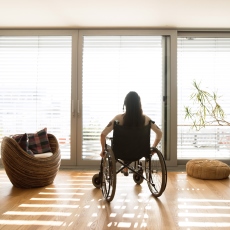
Paralysis is the loss of muscle function in part of your body. It happens when something goes wrong with the way messages pass between your brain and muscles. Paralysis can be complete or partial. It can occur on one or both sides of your body. It can also occur in just one area, or it can be widespread. Paralysis of the lower half of your body, including both legs, is called paraplegia. Paralysis of the arms and legs is quadriplegia.
Most paralysis is due to strokes or injuries such as spinal cord injury or a broken neck. Other causes of paralysis include:
- Paralysis (National Library of Medicine)Paralysis is the loss of muscle function in part of your body. It happens when something goes ... way messages pass between your brain and muscles. Paralysis can be complete or partial. It can occur ...
- Polio and Post-Polio Syndrome (National Library of Medicine)... nervous system. In serious cases, it can cause paralysis (where you can't move parts of the body). The paralysis may be lifelong and can sometimes be life- ...
- Parkinson's Disease (National Library of Medicine)Parkinson's disease (PD) is a type of movement disorder. It happens when nerve cells in the brain don't produce enough of a brain chemical called dopamine. Sometimes ...
- Spastic paraplegia type 8 belongs to a group of genetic disorders known as hereditary spastic paraplegias. These disorders are characterized by progressive muscle ...
- Hyperkalemic periodic paralysis is a condition that causes episodes of extreme muscle weakness or paralysis, usually beginning in infancy or early childhood. Most ...
- Spastic paraplegia type 15 is part of a group of genetic disorders known as hereditary spastic paraplegias. These disorders are characterized by progressive ...
- Spastic paraplegia type 7 (also called SPG7) is one of more than 80 genetic disorders known as hereditary spastic paraplegias. These disorders primarily affect ...
- Spastic paraplegia type 2 is part of a group of genetic disorders known as hereditary spastic paraplegias. These disorders are characterized by progressive muscle stiffness ( ...
- Spastic paraplegia type 5A is one of a group of genetic disorders known as hereditary spastic paraplegias. These disorders are characterized by muscle stiffness (spasticity) ...
- Infantile-onset ascending hereditary spastic paralysis is one of a group of genetic disorders known as hereditary spastic paraplegias. These disorders are characterized by progressive muscle stiffness ( ...



